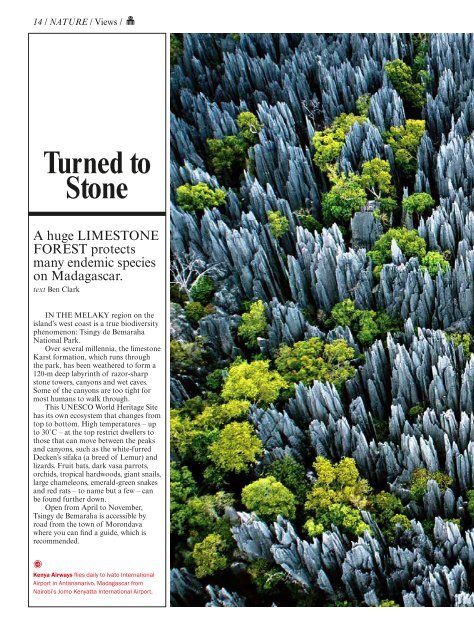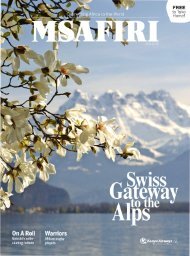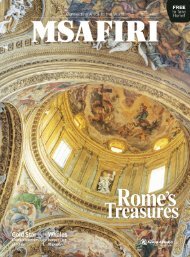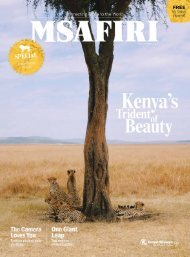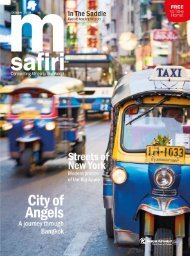Create successful ePaper yourself
Turn your PDF publications into a flip-book with our unique Google optimized e-Paper software.
14 / NATURE / Views /<br />
NATURE / 15<br />
Turned to<br />
Stone<br />
A huge LIMESTONE<br />
FOREST protects<br />
many endemic species<br />
on Madagascar.<br />
text Ben Clark<br />
IN THE MELAKY region on the<br />
island’s west coast is a true biodiversity<br />
phenomenon: Tsingy de Bemaraha<br />
National Park.<br />
Over several millennia, the limestone<br />
Karst formation, which runs through<br />
the park, has been weathered to form a<br />
120-m deep labyrinth of razor-sharp<br />
stone towers, canyons and wet caves.<br />
Some of the canyons are too tight for<br />
most humans to walk through.<br />
This UNESCO World Heritage Site<br />
has its own ecosystem that changes from<br />
top to bottom. High temperatures – up<br />
to 30˚C – at the top restrict dwellers to<br />
those that can move between the peaks<br />
and canyons, such as the white-furred<br />
Decken’s sifaka (a breed of Lemur) and<br />
lizards. Fruit bats, dark vasa parrots,<br />
orchids, tropical hardwoods, giant snails,<br />
large chameleons, emerald-green snakes<br />
and red rats – to name but a few – can<br />
be found further down.<br />
Open from April to November,<br />
Tsingy de Bemaraha is accessible by<br />
road from the town of Morondava<br />
where you can find a guide, which is<br />
recommended.<br />
Kenya Airways flies daily to Ivato International<br />
Airport in Antananarivo, Madagascar from<br />
Nairobi’s Jomo Kenyatta International Airport.<br />
Getty Images


